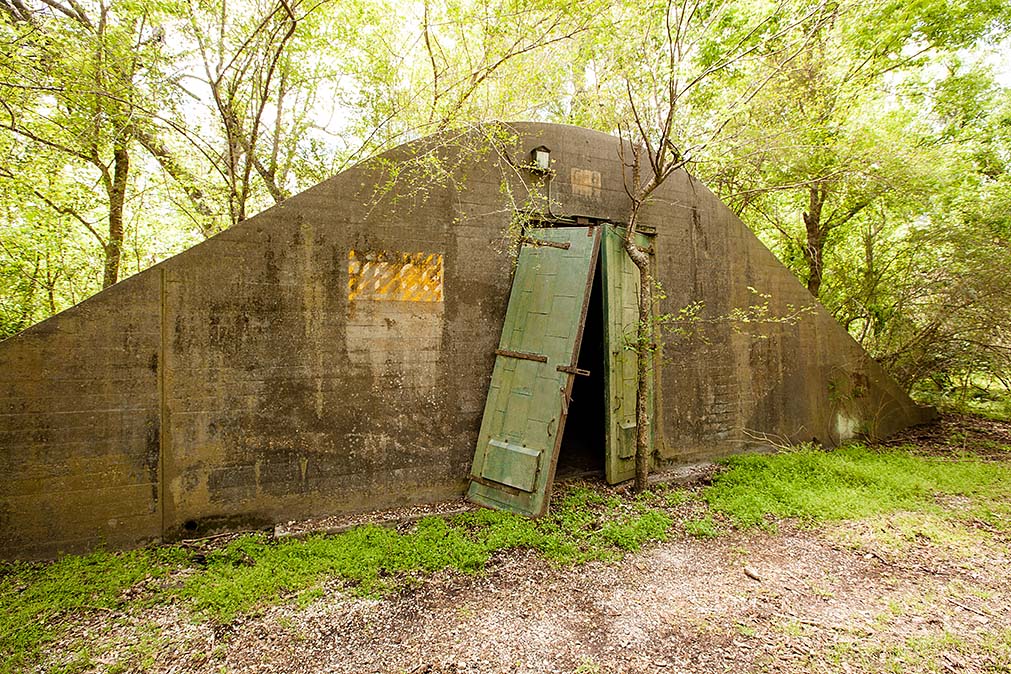
Take the Bottomland Trail all the way to the end and find a truly unique sighting in the middle of a peaceful wetland forest. Settled among the trees, you’ll discover a grouping of 10 WWII Ammunition Magazines, a piece of history from when this area was occupied and used by our military.
In 1939, the American Government occupied approximately 5000 of the 10,000-acre peninsula for use of ammunition storage during World War II. The area was purchased by the Navy and commissioned as the Marine Base Naval Ammunition Depot New Orleans Louisiana (MBNADNOLA).
According to an oral history provided by Sam Cucinello who worked at the Naval Ammunition Depot site from 1948 until it closed in 1956, it was civilians who worked with the ammunition. Ammunition came to the property by ship and rail. After a year, it only came by rail. There were rail lines throughout the property along the river and contained what was referred to as “Areas A and B” where small arms for machine guns and shells were stored. The area now occupied by Woodlands Trail and Park was referred to as “Area D”. It was for storage of black powder used in battle ships and torpedo warheads. This ammunition was transported by truck for fear that a spark would cause an explosion. Al Crawford who was stationed at the property during WWII was in the Marine Corps. It was the Marine Corps who provided the security to the area. The security force road on horseback on trails throughout the property. Later, horses were replaced by Jeeps. According to Pat Tunstall, the ammunition arrived from the Naval Ammunition Depot from the Louisiana Ordnance Plant in Minden, Louisiana. It was sent by rail to be loaded on ships on the Mississippi River located at two docking areas along the peninsula formed by Orleans and Plaquemines parish and then traveled to the South Pacific during WWII.
The property was used similarly during the Korean War and then was excessed by the military in 1963 at which time part of the property went to the state of Louisiana, Plaquemines Parish Government and Tulane University. The remaining land was retained by the military and is now used as the Coast Guard Communication Station with a portion leased to the City of New Orleans for operation of Audubon Center for Research of Endangered Species.

 WOODLANDS CONSERVANCY
WOODLANDS CONSERVANCY
